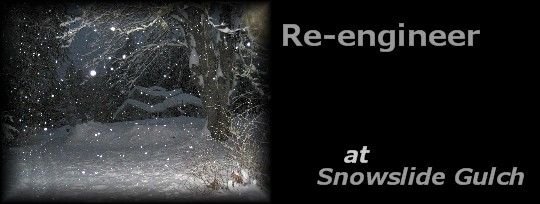There was a time that Doug speculated on putting a
mini nuclear power plant under the house (yes, they exist).
We decided to make the upgrades to the existing hydropower plant instead.

There are a bunch of different ways to set up a hydroelectric power generator however...
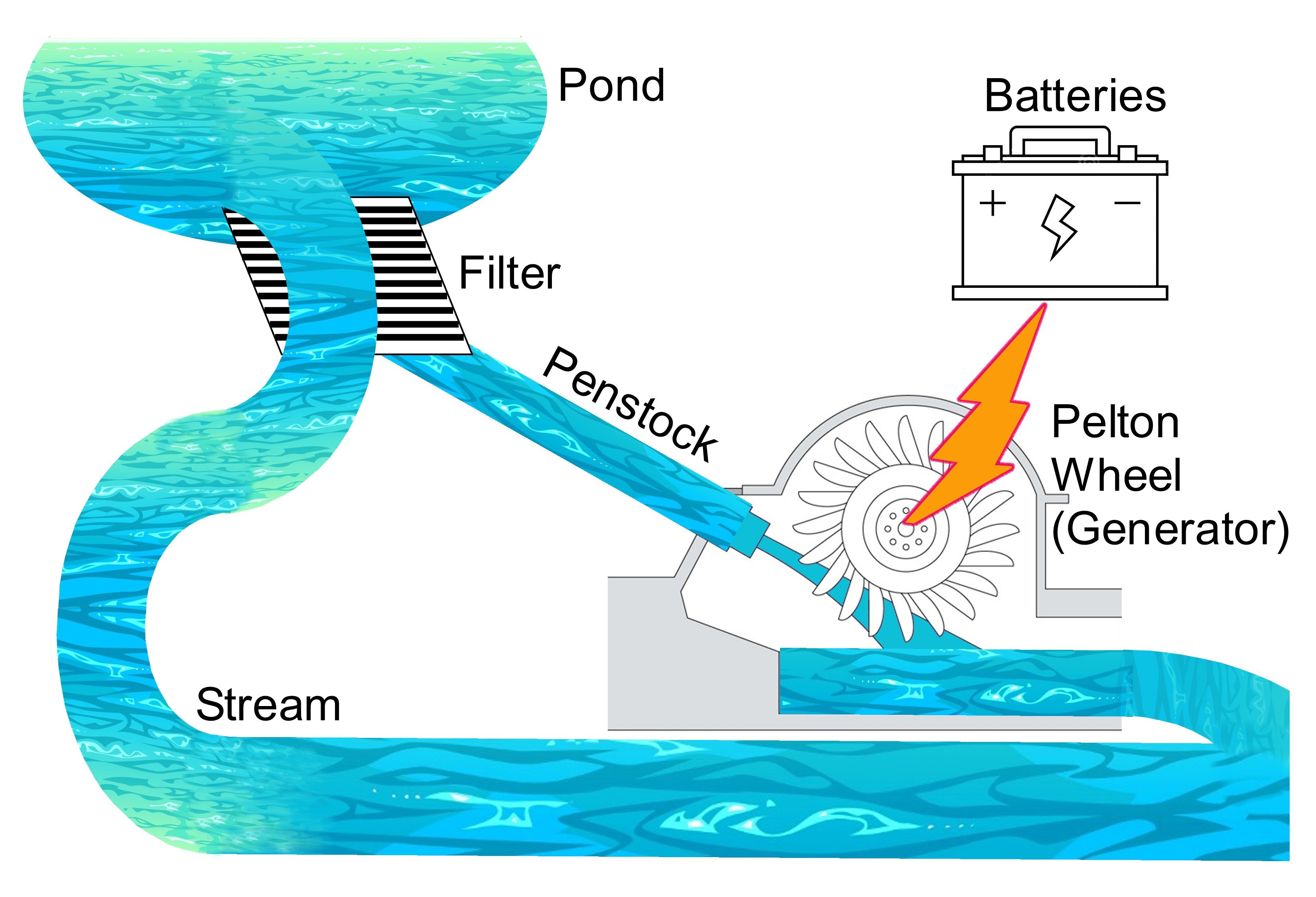
We have a stream-fed pond on the mountain up above the house that acts like a storage battery. All the water in the pond is just waiting to dive into the penstock to feed our turbine
(whoo hoo! Potential energy!)
To get power from this type of generator the water needs to spit out of the penstock and onto the water wheel with as much force as possible. Our pond has good amount of elevation above the generator to provide the momentum.
Before the pond water heads for the generator it is directed over a filter. The filter both keeps the generator nozzles from plugging (most of the time) and it protects the turbine from getting worn away by grit.
There is too much water for the filter to suck up all the water so what is left continues down the mountain on it's own gathering more water from other streams along it's way.
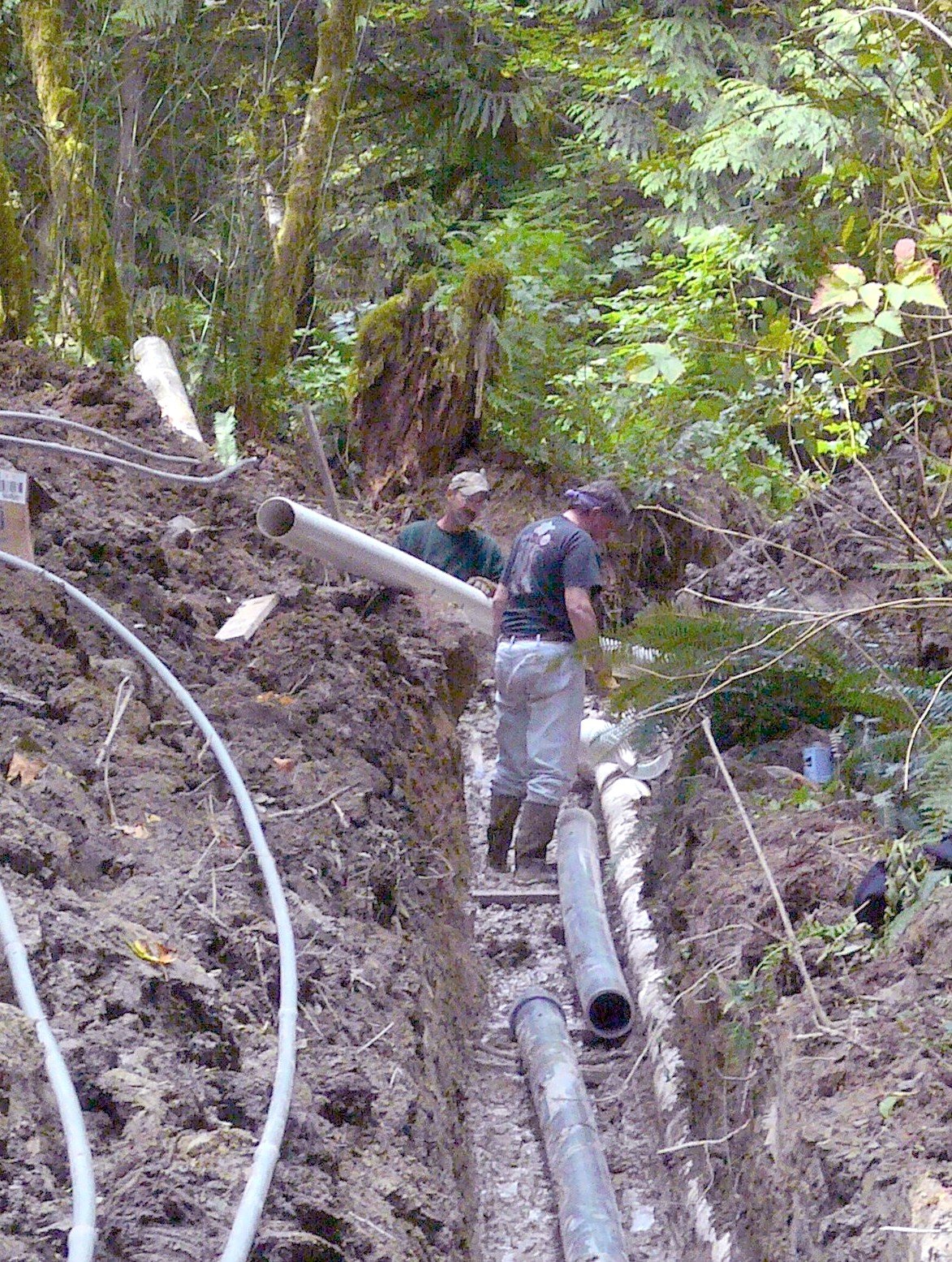
The water drains from the filter into the penstock. There's actually a bit of consideration that goes into its construction to make the force of the water as strong as possible when it finally hits the generator.
To minimize the friction of the water, (lower friction = higher velocity = more power), the penstock is as straight as possible and the diameter of pipe is as large as the water source can handle. Every little bit helps!
We have 3 varying sizes of nozzles. All of the nozzles' valves can be opened up when we have a lot of water in the winter but the larger ones are closed in the middle of summer when the stream (and thus the pond) has less water. That is when we get most of our power from the solar cells.
And thus it is that (if you remember your high school physics) the potential energy of the water up the mountain is turned into kinetic energy in the penstock which the turbine uses to make rotational energy which spins a wire coil core within a series of powerful electromagnets creating electricity. The electricity flows up wires to be stored in the battery bank.
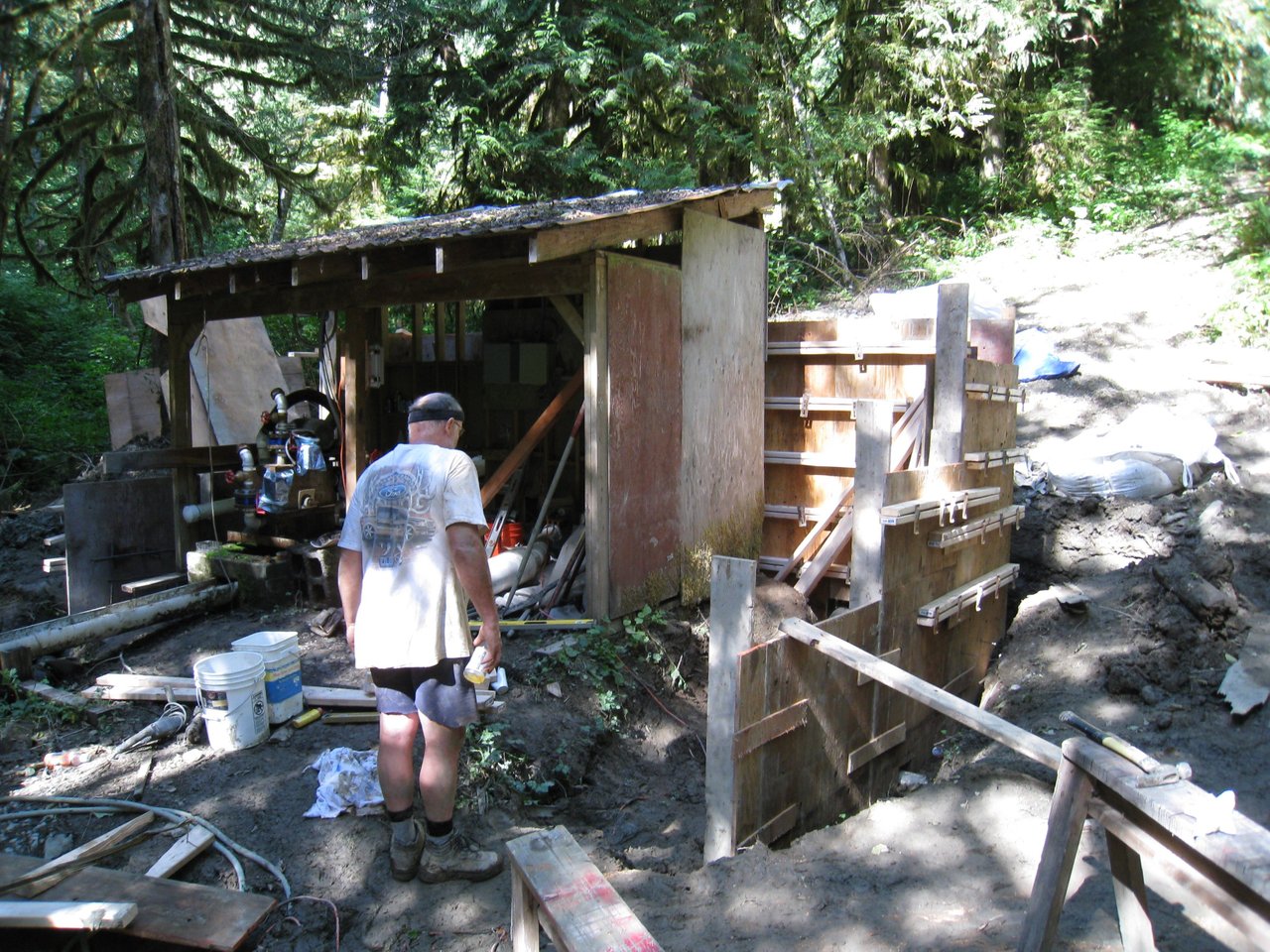 Our most excellent cement form maker, Pat, who built cement forms
Our most excellent cement form maker, Pat, who built cement formsfor the new generator shed around the old shed.
We replaced the old generator shack right near the end of Doug’s
“Cement Construction Makes Better Buildings” Phase.
Since the shed was finished we have changed out the old Fu King (yes, that was its real name) generator with a newer, better one. The Fu King generator was as frustrating as it sounds and we're glad to be rid of it!
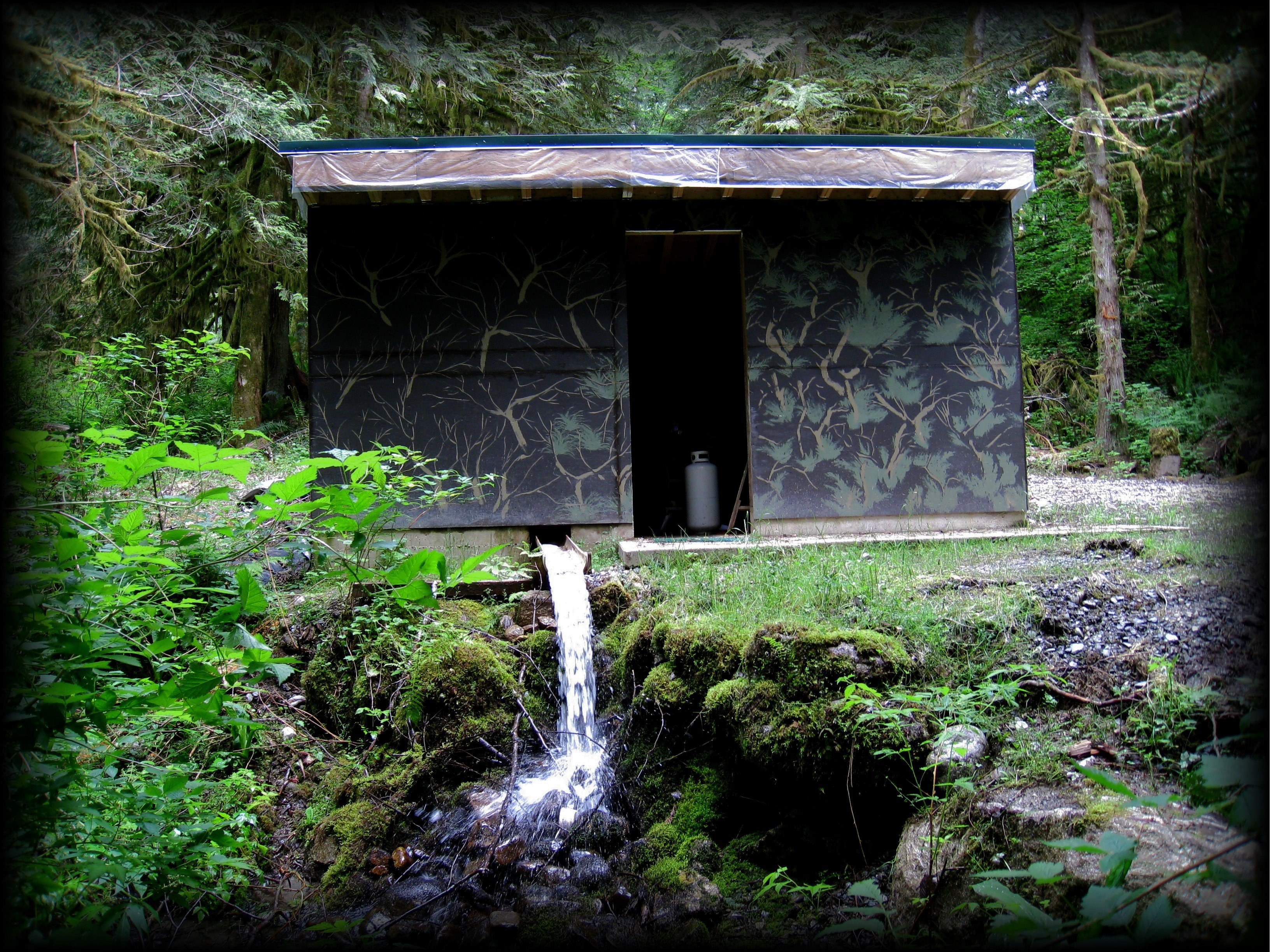
Check it out! ↓
Living in Luxury Off the Grid - For We Who Hunger for Power! (part 1)